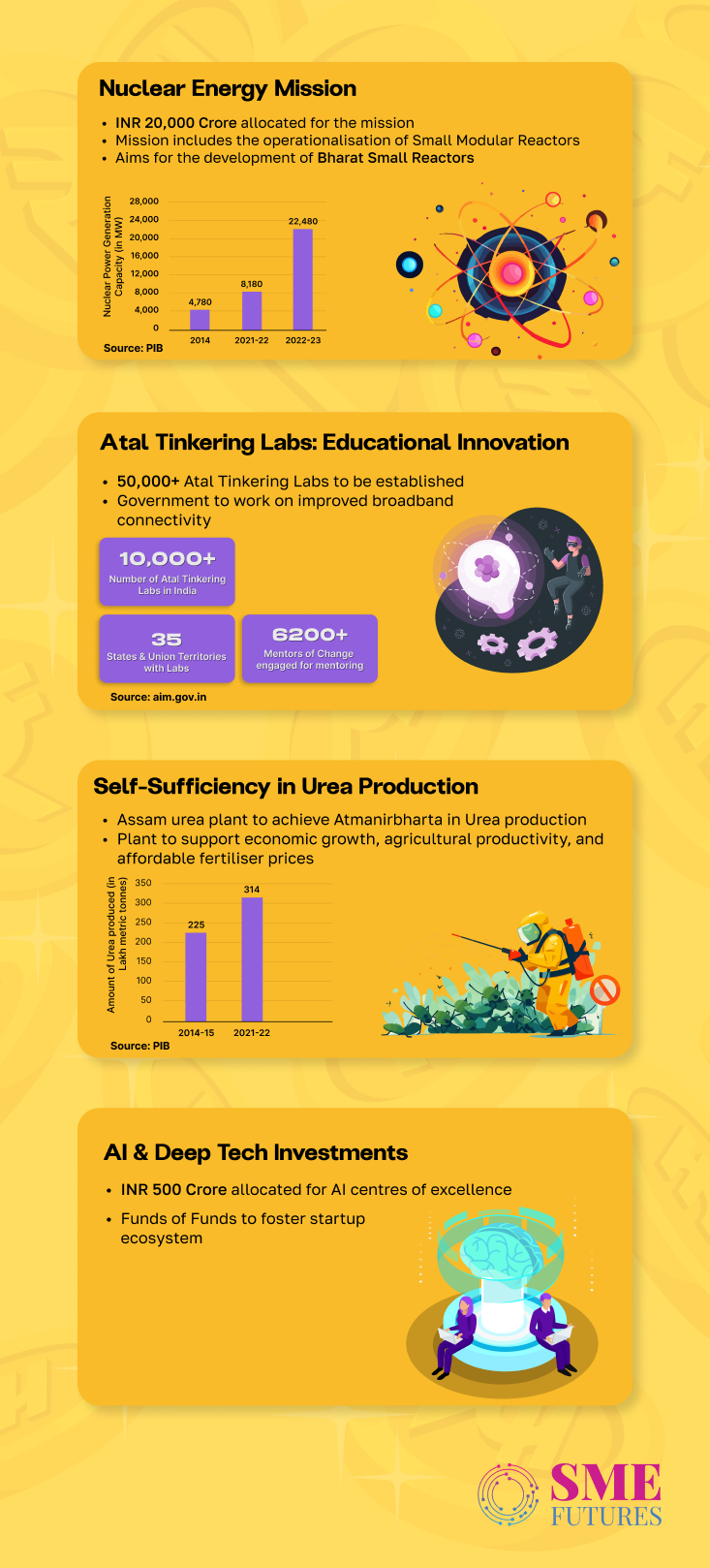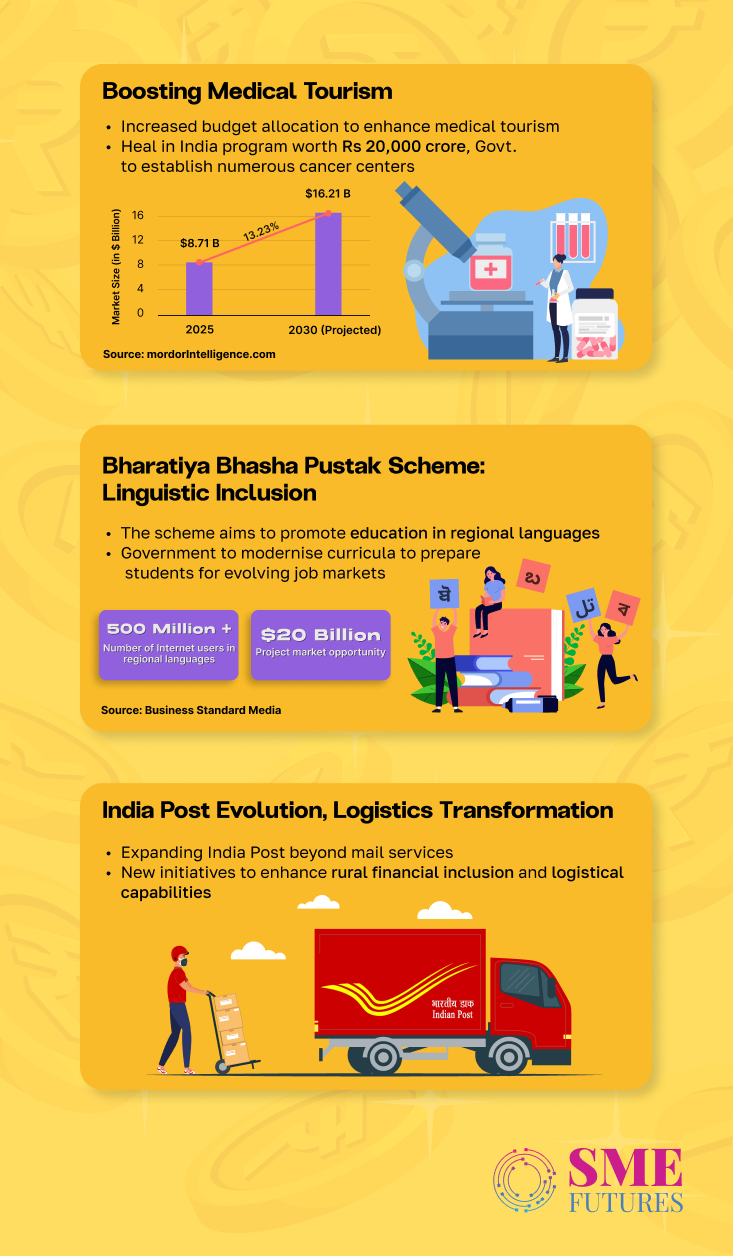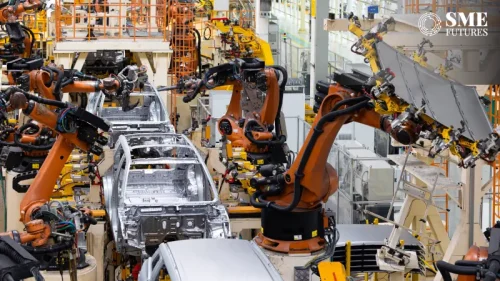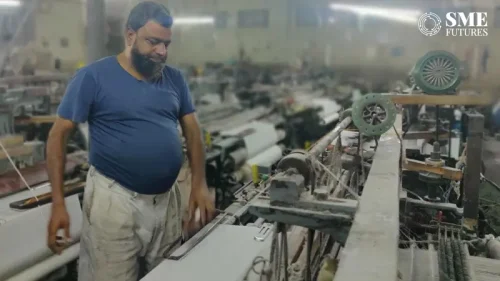While most budget discussions focus on taxation, infrastructure, and MSMEs, the 2025-26 Union Budget has quietly introduced a series of targeted investments in underexplored yet high-potential sectors. From nuclear energy and AI-led skilling to logistics reform and agricultural innovation, these initiatives may not dominate the headlines today, but they are poised to transform India’s economic and social landscape in the coming decades.
Nuclear energy revolution
India’s commitment to clean energy took a decisive turn with the allocation of Rs 20,000 crores for the Nuclear Energy Mission. The goal? To enhance the country’s nuclear capabilities through Small Modular Reactors (SMRs) and Bharat Small Reactors (BSRs). This initiative aligns with India’s long-term objective of achieving net-zero emissions by 2070 and reducing dependency on fossil fuels.
“The Nuclear Energy Mission received Rs 20,000 crores in the Budget 2025-26 to enhance India’s clean energy capabilities. This includes operationalising five Small Modular Reactors (SMRs) by 2033 and developing Bharat Small Reactors (BSRs). These initiatives will not only advance clean energy but will also create significant job opportunities in the sector,” says Subburathinam P, Chief Operating Officer, TeamLease.
However, the success of this nuclear push depends on resolving regulatory challenges. The FM’s announcement of amendments to the Atomic Energy Act is expected to encourage private sector participation in nuclear power generation. “Setting a clear north star on development of nuclear power at scale through the Union Budget provides directional clarity on these issues. However, a string of follow-on measures will be required to ensure the implementation of the goals,” says Anish De, Global Head of Energy, KPMG.
The proposed changes in the Civil Liability for Nuclear Damage Act also aim to provide legal clarity, potentially attracting foreign investments into the sector.

Atal Tinkering Labs
To cultivate scientific curiosity and a problem-solving mindset among young students, the government has committed to setting up 50,000 Atal Tinkering Labs (ATLs) in government schools over the next five years. This is a major leap towards fostering an innovation-driven economy.
“The rollout of 50,000 ATLs in government schools will cultivate scientific curiosity, innovation, and entrepreneurship among young students, ensuring they are well-prepared for the jobs of the future,” says Sumit Kumar, Chief Strategy Officer, TeamLease Degree Apprenticeship.
This initiative is complemented by the expansion of broadband connectivity to all secondary schools, ensuring that digital learning is accessible even in rural areas. “Establishing 50,000 ATLs marks a transformative leap towards making learners future-ready with creativity and innovation at the heart of it,” notes Arun Rajamani, Managing Director, South Asia, Cambridge University Press and Assessment.
Bharatiya Bhasha Pustak Scheme: Strengthening India’s linguistic heritage
The introduction of the Bharatiya Bhasha Pustak Scheme marks a crucial step towards promoting education in regional languages. By ensuring educational materials in Indian languages, the scheme aims to bridge learning gaps and make education more inclusive.
“The Bharatiya Bhasha Pustak Scheme is a commendable step towards inclusive and accessible learning,” says Dr. Venkat Rangan, Vice-Chancellor, Amrita Vishwa Vidyapeetham. However, there is also a growing demand for modernising curriculum designs to prepare students for the evolving job market.
“The government must look into structured investments to ensure that the next generation is not just educated but truly equipped for the world ahead,” says Lina Ashar, Founder, Dreamtime Learning.
Tourism and medical tourism: India’s global push
India’s tourism sector is set to receive a substantial boost, with dedicated allocations for infrastructure development and heritage site conservation. Additionally, medical tourism is a key focus area, with targeted initiatives to strengthen India’s reputation as a global healthcare destination.
“India’s medical tourism industry has witnessed tremendous growth, and this budget aims to take it further by focusing on two crucial aspects: affordable healthcare solutions and the promotion of medical value travel (MVT),” says Rajeev Taneja, CEO, Global Care.
The ‘Heal in India’ initiative, supported by a Rs 20,000 crore allocation, is expected to reinforce India’s position as a global hub for affordable and high-quality medical care. This is complemented by the establishment of 200 cancer centres across districts, improving specialised care access nationwide.

Urea plant in Assam
To achieve self-sufficiency in urea production and reduce dependency on imports, the government has announced the establishment of a new urea plant in Namrup, Assam, with an annual production capacity of 12.7 lakh metric tonnes.
Given that India is the second-largest consumer of urea in the world, this strategic investment not only supports agricultural productivity but also strengthens India’s Atmanirbhar Bharat vision in the fertiliser sector by ensuring an uninterrupted supply of affordable fertilisers to farmers.
“The push for Atmanirbharta in urea through a new plant in Assam is a positive step towards reducing input costs for farmers,” says Avinash Karale, Co-Founder, Rowbotix Agtech Pvt Ltd.
Additionally, this move aligns with industrial growth in eastern India, leveraging Assam’s abundant natural gas resources to fuel the plant. This initiative is expected to generate employment opportunities in the region, from technical roles in manufacturing to jobs in logistics and distribution, ultimately fostering broader economic growth in the Northeast.
Revamping India post: From mail carrier to logistics powerhouse
One of the most transformational changes in this year’s budget is the repositioning of India Post as a national logistics giant. With a focus on last-mile connectivity, the expansion of India Post Payments Bank and a network of 2.4 lakh dak sevaks will enhance rural financial inclusion and logistics capabilities. Expanding its role beyond traditional mail services, India Post is now envisioned as a key player in logistics, particularly benefitting small entrepreneurs, self-help groups, and rural businesses.
“The Union Budget 2025 outlines a transformative vision for India Post, positioning it as a ‘large public logistics organisation’ with 1.5 lakh rural post offices,” says Radhika Kalia, Managing Director, RLG Systems India Pvt Ltd. This will significantly empower MSMEs, women entrepreneurs, and the rural economy.
“The budget indicates a clear focus on inclusive growth and modernising logistics infrastructure across urban and rural landscapes and will lead to improved supply chain efficiencies and retail expansion, catalysing economic resilience and expansion in India’s logistics sector,” Kalia adds.
AI and Deep Tech: Fuelling India’s digital future
With an allocation of Rs 500 crores for AI Centres of Excellence, the budget underscores the government’s commitment to AI-led transformation.
“The establishment of Centres of Excellence in AI and the launch of a new Fund of Funds for start-ups will further bolster India’s position as a hub for innovation and entrepreneurship,” says Venkatraman Narayanan, MD and CFO, Happiest Minds Technologies.
The Deep Tech Fund of Funds and an additional Rs 10,000 crores allocated for start-up growth signal a decisive push towards emerging technologies. With sustained investment and policy support, India’s deep-tech sector could emerge as a formidable competitor to Silicon Valley and China, setting global benchmarks for AI innovation.
While these initiatives may not have captured mainstream attention, they represent a silent but strategic shift in India’s development roadmap. By investing in clean energy, technological innovation, logistics, education, and agriculture, the government is laying the foundation for India’s long-term economic resilience and global positioning. As these policies unfold, their success will depend on execution, investment attraction, and global collaboration. The coming years will reveal whether these initiatives can truly deliver on their promises and reshape India’s future.











